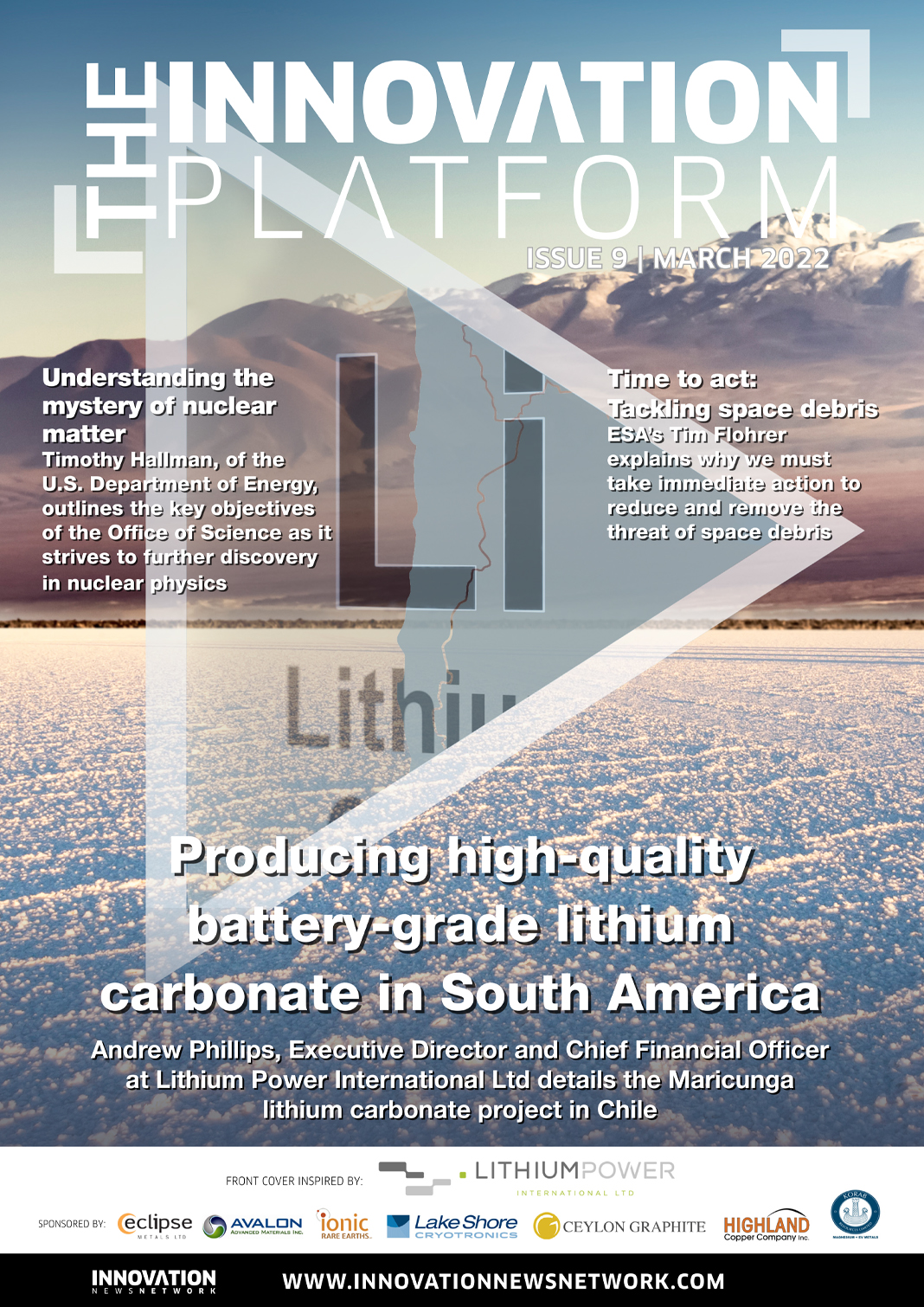The ninth edition of The Innovation Platform explores groundbreaking research and innovation on topics such as the future of battery development, securing the critical raw materials needed for the green energy future, advancements in physics and space exploration, and much more.
As we move through 2022, restrictions are continually being lifted, and a return to a more ‘normal’ way of life can be seen on the horizon. Whilst COVID-19 is very much still a present challenge, the ‘learn to live with it’ mentality appears to have been adopted by many as they embrace the restored freedoms.
The emergence from lockdown, however, is not all positive, with significant price rises affecting a wide range of markets across the globe. In line with the continuous adjustment to a low-carbon society, high demand and a subsequent declining supply of lithium and other raw materials have sent the cost of materials for batteries spiralling to record heights. This edition features an extensive focus on the supply of raw materials, exploring how countries worldwide are working to address these challenges. Examining the rapidly increasing demand for lithium, Anand Sheth, Founding Chairman at the International Lithium Association (ILiA), explains why the global lithium industry has come together and outlines ILiA’s vision for the future. We also hear from Benjamin Gedan, Deputy Director of the Latin American Program at the Woodrow Wilson International Center for Scholars, discussing how the Lithium Triangle Initiative is helping to support the sustainable development of lithium resources in South America. Highlighting battery demand and the importance of critical raw materials, this edition will also feature a special focus on the Australian and Canadian battery sectors. Amongst this collection of specialist comments, Ian London, from the Canadian Critical Minerals and Materials Alliance, addresses the importance of UK and Canadian collaboration to support the security of the critical materials supply chain.
The lifting of travel restrictions is welcome news for researchers working on collaborative, international projects. Whilst virtual means have enabled projects to prosper under the challenging conditions of the COVID-19 pandemic, the greater freedom can only be a positive move for developments dependent on expertise and resources from abroad. The PIP-II enhancement to the Fermilab accelerator complex, for example, is a major DOE project with international participation from Europe and elsewhere. To learn more about the significance of international contribution in the project and the large potential for new discovery, I spoke to Lia Merminga, Director of PIP-II. An emphasis on global partnership is present throughout our physics section, as we also hear from respected scientists from the likes of CERN, the Canadian Light Source, and the U.S. Department of Energy about projects including the Future Circular Collider Feasibility Study and the Electron-Ion Collider.
In the area of space and astrophysics, the end of 2021 and the beginning of 2022 has seen all eyes on the launch of the James Webb Space Telescope (JWST). Over 25 years in the development, the JWST mission has been a highly-anticipated successor to the Hubble Space Telescope. We have put together a special feature, with an extensive mission timeline detailing the key events to document its journey. Furthermore, we also spoke to the University of Arizona’s Professor George Rieke, who led the build of the Mid-Infrared Instrument (MIRI) for the JWST.
These are just some of the many interesting topics featured in this edition. I hope you find this an insightful read, and I welcome your comments and suggestions for future issues.
Georgie Whitworth
Editor
The Innovation Platform


